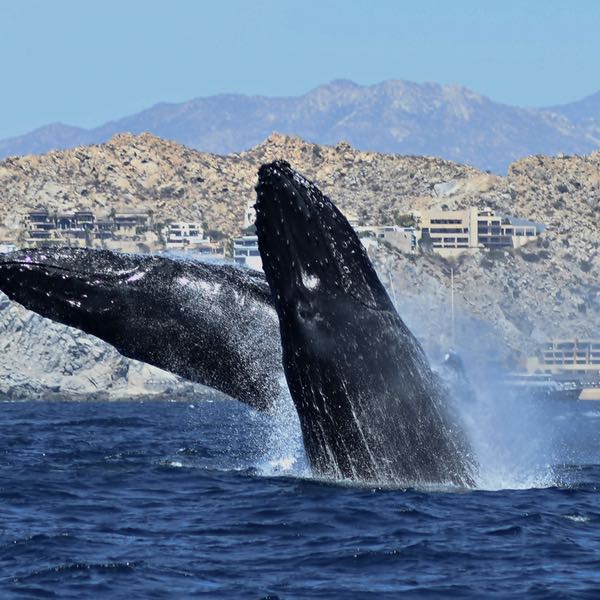[page_title]
[post_date]
By Alex Navarro
Cabo is mango heaven! And the mango season is upon us, being July and August the strongest months. We are blessed as every summer there is an abundance of mangos here, so while you are visiting try to get some mangos for yourself and enjoy this amazing fruit.
Let me share some great information on mangos. There are over 400 varieties of mango trees on Earth, and estimates of over one thousand if you add all the hybridization varieties.
The mango is classified as a juicy stone fruit and belongs to the genus Mangifera Indica which are mainly tropical fruit trees. This genus belongs to the family of flowering plants Anacardiaceae . The mango is indigenous to India where it has been part of their diet for over 4000 years. It is related to the pistachio, cashew and plum trees. The origin of the word Mango comes from its Sanskrit name which is am, which in turn means provisions, and later there was an adaptation of the Tamil name for the mango fruit, mang-kay. Furthermore, in 1498 during the spice trade between Portugal and Kerala in Malaysia, the English word for mango originated from the Malaysian word māṅṅa or manga.
The mango first spread from India all through Asia and the far east and then arrived in Acapulco, Mexico in 1775 when the Spanish galleons sailed their trade routes from the Philippines. After arriving in the Pacific coast of Mexico, it arrived one hundred years later in the Gulf of Mexico coast at the port of Veracruz coming from the British Antilles.
The mango has been called the king of fruits for many reasons. It accounts for over 35% of the worldwide tropical fruit consumption, the tree can grow over 35 meters tall, bear fruit in 4 years, and keep producing for as long as 50 years or more. There are also mango trees that can be 300 to 400 years old and some specimens still bear fruit. Every summer mango trees bear fruit, but some varieties give double crops.
It is also the national fruit of India, Pakistan, and the Philippines and the national tree of Bangladesh. It is said that the Mughal emperor Akbar planted over 100,000 thousand mango trees in Darbhanga, India. The goddess Ambika is always depicted sitting under a mango tree as well as the deity Ganesha is represented with a ripe mango in its hand, symbolizing the potential of attaining perfection.
As I mentioned, here in Baja we are blessed to have an abundance of mangos in the summertime. Some varieties include Kent, Ataulfo also known as Manila. We also have mango Manzano, Criollo, Machete, Papayo and the outstanding Tempranero de Mayo which is ready early season.
I like to eat them straight from the tree, but there are many recipes that can be made from mangos. Here in Cabo some of them are: mango turnovers or ‘’empanadas”, mango daiquiris or margaritas, mango ceviche, mango jam, mango smoothies, mango ice cream or popsicles, coconut shrimp with mango sauce, and many others.
So make sure you try to get some mangos this vacation and of course if you can find some dehydrated mangos, they will make the perfect souvenir snack to take home or enjoy on the plane flight back. Enjoy!
by Marilia Olio, Marine Biologist and guide at Cabo Trek
Humpback whales have became famous to be the superheroes of the ocean and the reason remains unclear. There have been at least 115 documented sightings of rescues made by humpback whales since 1951 and recent reports suggest that humpbacks have intervened to save their own calves, as well as California sea lions, ocean sunfish, harbor seals, and gray whales. In nearly 90 percent of cases, the humpbacks seemed to show up after the orcas had already begun to hunt, suggesting that humpbacks are not defending themselves but actively choosing to interact with hungry orcas.
One of this cases happened in Antarctic in 2009. Several killer whales were trying to catch a Weddell seal that had taken refuge atop a drifting patch of Antarctic ice when a pair of humpback whales turned up. As the panicked seal swam toward them, a lucky wave tossed it onto the chest of the closer, upturned whale. The whale arched its chest out of the water, which kept the seal away from the charging killer whales. And when the seal started to fall off, the whale carefully pushed it back onto its chest with a flipper. Soon after that, the seal scrambled to safety on another ice floe.
 In 2012, researchers observed a pod of killer whales attacking a gray whale and its calf in Monterey Bay, California. Two humpback whales were already on the scene as the killer whales, or orcas, attacked the grays. After a struggle, the calf was killed. But after the calf had been killed, around 14 more humpbacks arrived—seemingly to prevent the orcas from eating the calf. One of those humpbacks was sighted in Cabo in March of 2017.
In 2012, researchers observed a pod of killer whales attacking a gray whale and its calf in Monterey Bay, California. Two humpback whales were already on the scene as the killer whales, or orcas, attacked the grays. After a struggle, the calf was killed. But after the calf had been killed, around 14 more humpbacks arrived—seemingly to prevent the orcas from eating the calf. One of those humpbacks was sighted in Cabo in March of 2017.
And the most recently case happened last year when a marine biologist was saved by a humpback whale in Cook islands. She was shocked when, on this dive, one of the animals swam up to her and began to nudge her with its head and cover her with its pectoral fin. Unsure why the humpback was acting this way and easily overpowered by the creature, the marine biologist decided to stay still and let the whale call the shots. After 10 minutes of care- fully dancing with the whale, when she climbed on board, she understood what the graceful giant was trying to tell her: a large tiger shark. The whale’s proximity saved her from a potential attack.
So are humpbacks compassionate? To fully understand the complexities of these interac- tions, a lot more research is needed. Meanwhile, you can Be a Cabo Trek guest and witness these gentle animals in their environment here.
[rev_slider alias=»footer-ads»]



